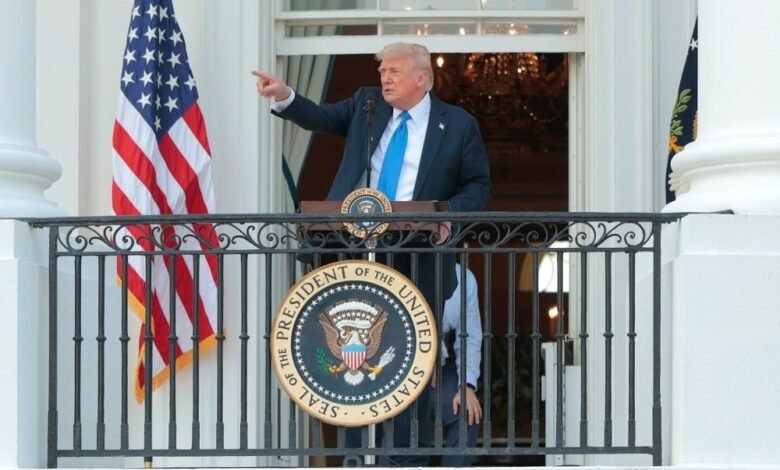Shocking U-Turn: Trump’s Travel Ban Makes a Comeback!

Trump’s Travel Ban Returns: Analyzing the Impact and Implications
The topic of immigration and travel restrictions has continually stirred both debate and controversy. Former President Donald Trump’s travel ban—a set of executive actions aimed at restricting entry into the United States from certain countries—has resurfaced as a significant subject as new political dynamics unfold within the U.S. and abroad. In this extensive analysis, we will explore the origins, developments, and current implications of these policies, shedding light on their impact on international relationships and U.S. domestic sentiment.
The Origins of the Travel Ban
Trump’s travel ban traces back to his early days in office when, on January 27, 2017, he issued an executive order titled “Protecting the Nation from Foreign Terrorist Entry into the United States.” The directive restricted entry from several predominantly Muslim countries, citing national security concerns. The initial list included Iran, Iraq, Libya, Somalia, Sudan, Syria, and Yemen. The rationale behind these restrictions was framed around fears of terrorism and the need for a rigorous vetting process for incoming travelers.
This executive action faced immediate backlash both domestically and internationally. Protests erupted at airports, and courts were quick to intervene, resulting in a series of legal challenges. In essence, the narrative surrounding the travel ban quickly shifted from being a protective measure to a contentious political issue entwined with discussions on racism and discrimination.
Legal Battles and Changes
Over the years, the travel ban has undergone various revisions due to ongoing legal tussles and demands from advocacy groups. The Supreme Court ultimately upheld a version of the ban in 2018, allowing the Trump administration to implement it in a manner that further restricted travel from specific countries, including North Korea and Venezuela while removing Iraq from the list.
This back-and-forth proved indicative not only of the challenges of implementing such policies but also of the divided political climate at the time. Republican supporters viewed it as a necessary tool for national security, while Democrats and many activists saw it as an affront to American values and a breach of constitutional rights.
The Impact on Immigration
The repercussions of Trump’s travel ban were profound, affecting thousands of individuals who either sought entry into the U.S. to reunite with family members or pursue educational opportunities. The emotional toll of the ban was immeasurable, as many individuals were left stranded, unable to see loved ones or fulfill their ambitions due to policies that many deemed discriminatory.
Moreover, the travel ban affected diplomatic ties with the countries involved. Nations like Iran and Syria expressed outrage, considering the restriction a violation of international norms. This led to a broader discussion about how Trump’s travel policies influenced the perception of the U.S. abroad, raising concerns over the long-term implications for foreign relations.
Insights into Public Sentiment
Public opinion on the travel ban has remained mixed throughout its lifecycle. Polls indicated a divided populace, significantly along party lines. While a segment of the American public supported the ban, citing national security and economic concerns, a substantial number opposed it, advocating for more inclusive immigration policies.
The travel ban not only sparked a robust national dialogue on immigration but also highlighted underlying fears and sentiments within society regarding Islamophobia and xenophobia. Advocates voiced the need for greater awareness to ensure that policies do not unjustly target specific populations based on religion or nationality.
The Biden Administration’s Response
Upon assuming office, President Joe Biden swiftly took action to reverse many of Trump’s policies, including the travel ban. In February 2021, he signed a proclamation lifting the restrictions on the countries affected, aiming to restore America as a welcoming nation that provides refuge and opportunity. The Biden administration’s stance emphasized a need for compassion and justice, presenting a stark contrast to the previous administration while seeking to engage in diplomatic measures with the countries on the ban list.
However, Biden’s initiation of immigration reform faced hurdles as Congress remained gridlocked over comprehensive immigration policy. This recurring stalemate underscored that the legacy of the travel ban was not merely a transient issue but rather a persistent challenge interwoven with broader immigration debates.
Trump’s Travel Ban Re-emerges as a Political Tool
This resurgence is not just about policies; it represents a symbolic return to the themes of nationalism and sovereignty that characterized Trump’s initial campaign. The conversations surrounding border safety and traveler vetting are likely to regain prominence as these themes resonate with a sector of the electorate that prioritizes security over inclusiveness.
Global Responses and Future Considerations
The global response to the travel ban continues to be an essential aspect of this ongoing saga. Leaders from various nations have weighed in, reflecting diverse perspectives on the implications of such policies in a world that is increasingly interconnected. More nations are advocating for collaborative approaches to tackle issues of migration and security rather than unilateral restrictions.
Furthermore, discussions surrounding the travel ban prompt a broader assessment of how countries manage immigration and human rights. As immigration trends and crises evolve globally, establishing a framework that respects individual rights while addressing legitimate security concerns is imperative moving forward.
Conclusion
As we examine the complexities surrounding Trump’s travel ban and its subsequent developments, it becomes clear that the topic of immigration remains one of the most polarizing issues in American society. The narrative around the travel ban encapsulates deeper themes of identity, security, and the values that the U.S. projects to the world. As the 2024 elections approach, the importance of understanding this landscape cannot be overstated.
The travel ban serves as a reminder of the crossroads at which the U.S. finds itself, balancing the need for security with the need for compassion and inclusivity. Stakeholders in the realm of immigration—a category that includes policymakers, advocacy groups, and the general public—must engage in open dialogue to address these intricate issues and work towards solutions reflective of the country’s core values.
Summary
- This blog delves into the complexities and implications of Trump’s travel ban, originating from his first months in office.
- The travel ban sparked major legal battles and was revised several times, underscoring the contentious political climate.
- Public sentiment regarding the ban was divided, illustrating the tension surrounding immigration in the U.S.
- The Biden administration reversed the ban but faced challenges in achieving comprehensive immigration reform.
- Trump’s potential presidential campaign in the future may see a reemergence of travel ban discussions as part of the national conversation on immigration.
- Global responses to the travel ban shed light on how countries can consider collaborative approaches to immigration issues.





